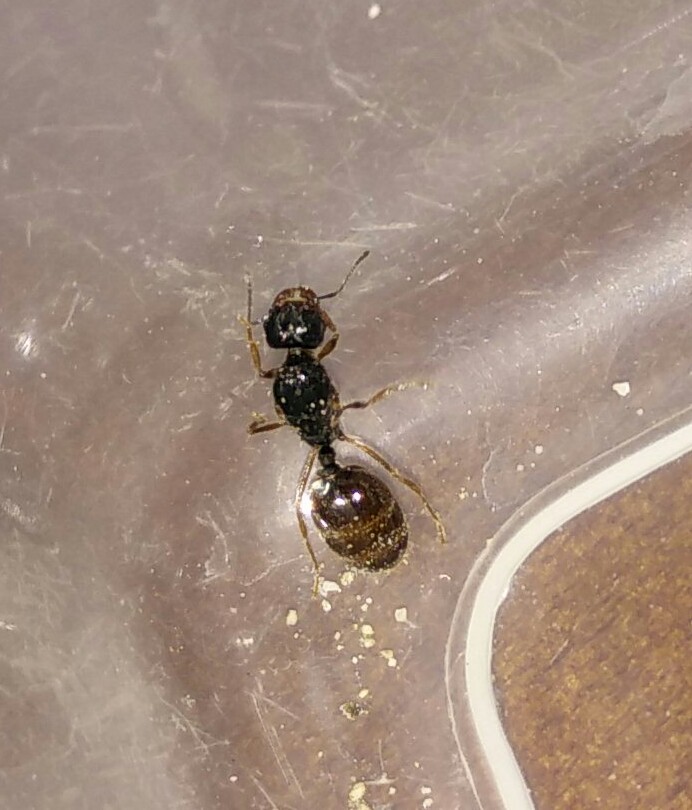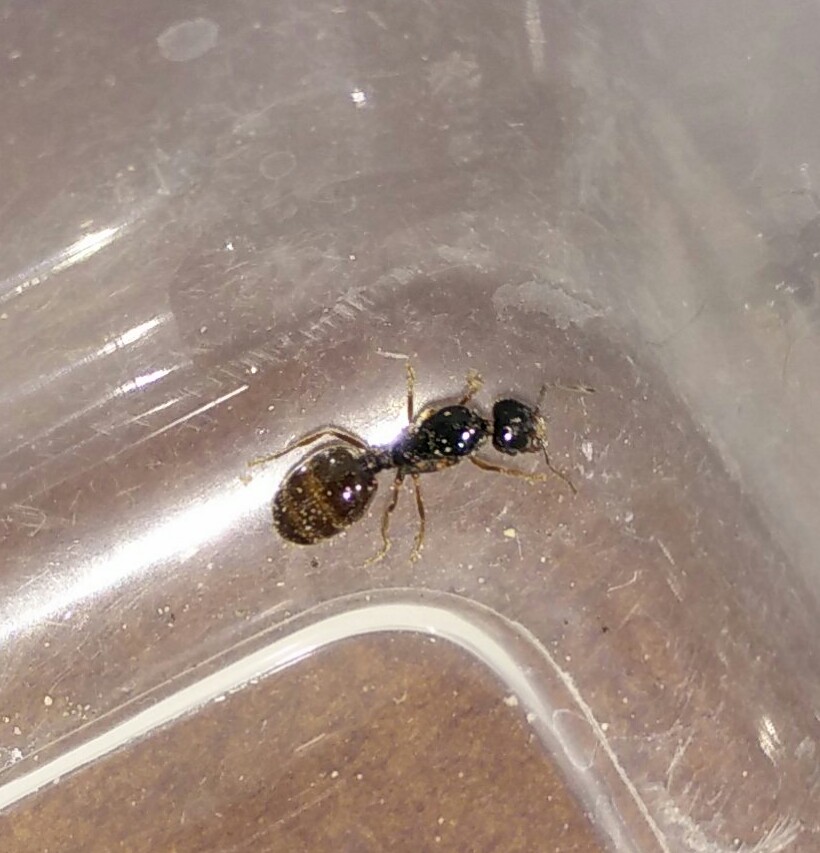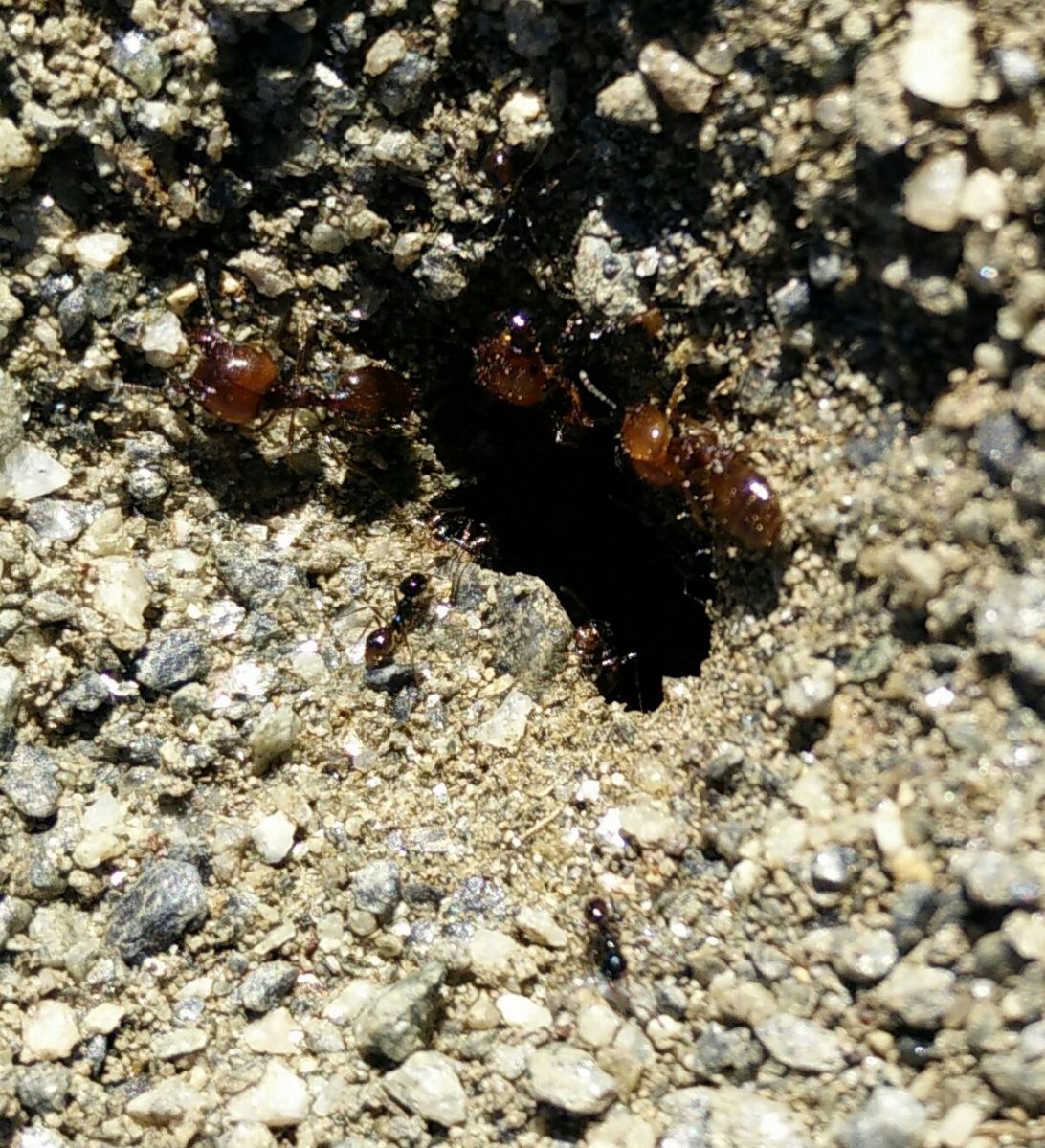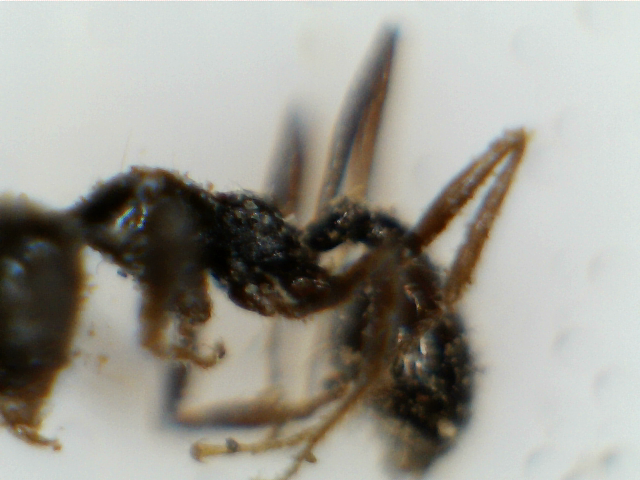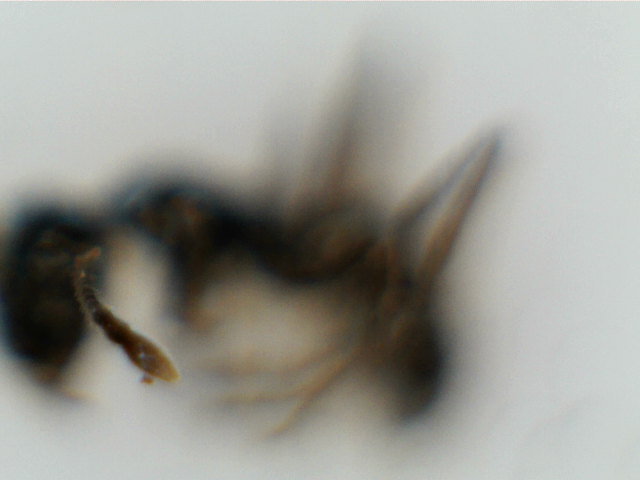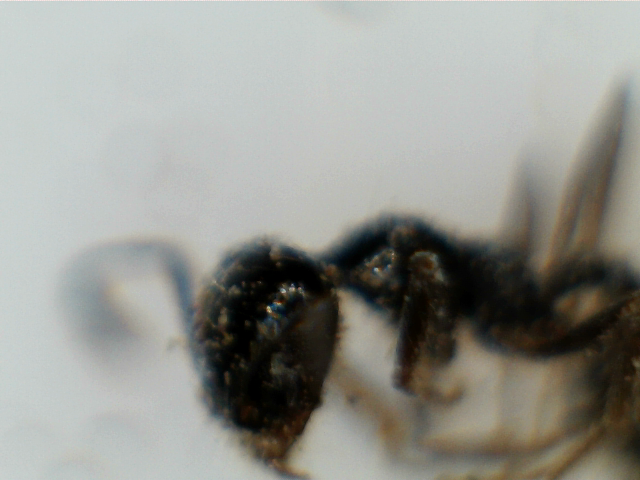1. Location of collection: Antelope Valley, CA
2. Date of collection: 2/19/2016
3. Habitat of collection: Desert chaparral
4. Length (from head to gaster): ~8mm
5. Color, hue, pattern and texture: Black, lighter banded gaster
Dug two of these up today from founding chambers. Doesn't look like Myrmecocystus nor Veromessor, the two I'd expect to be flying this time of year in the desert. Thanks.
